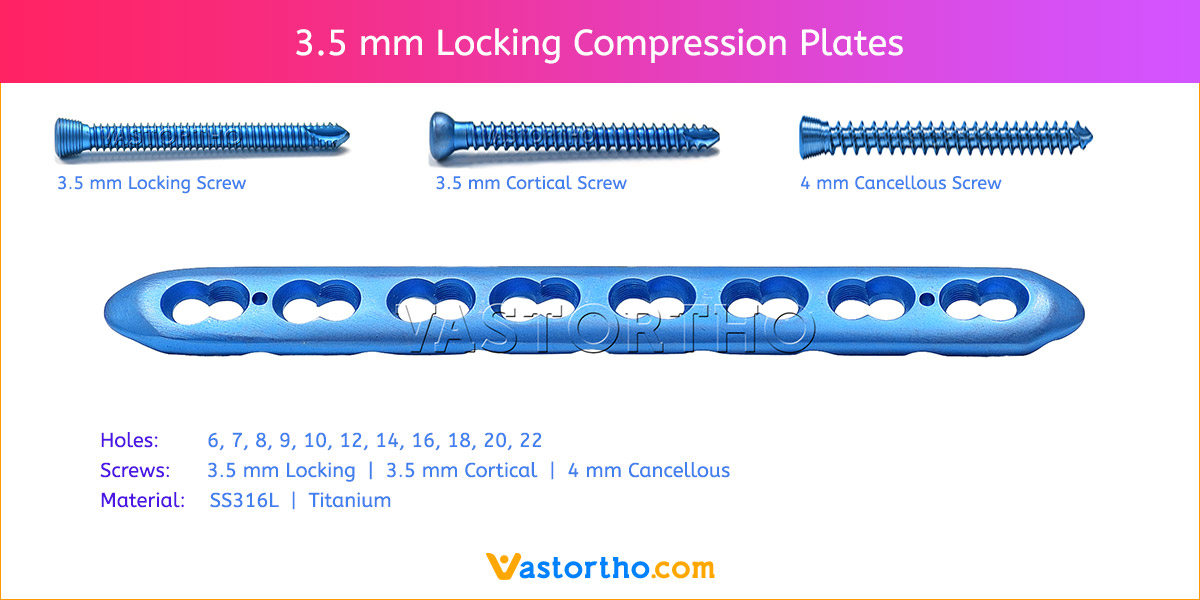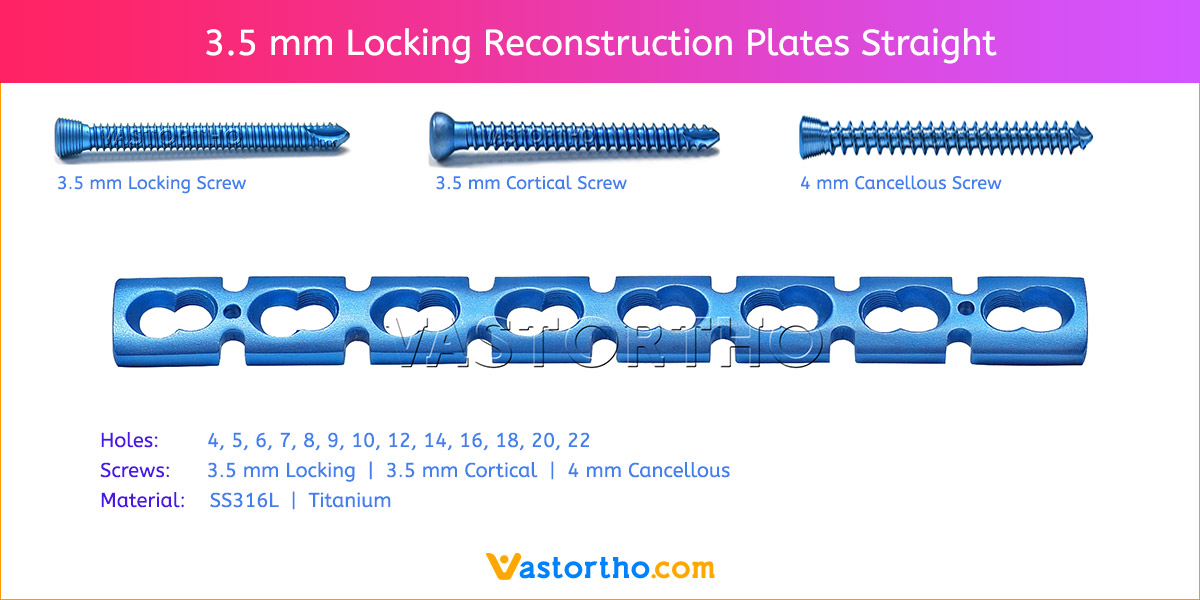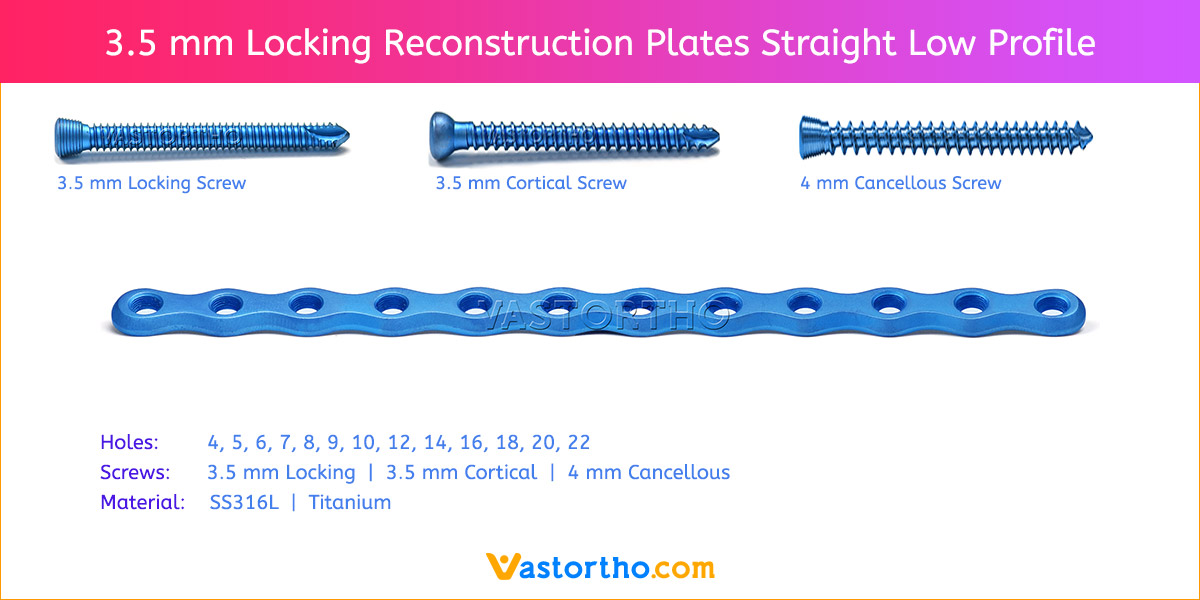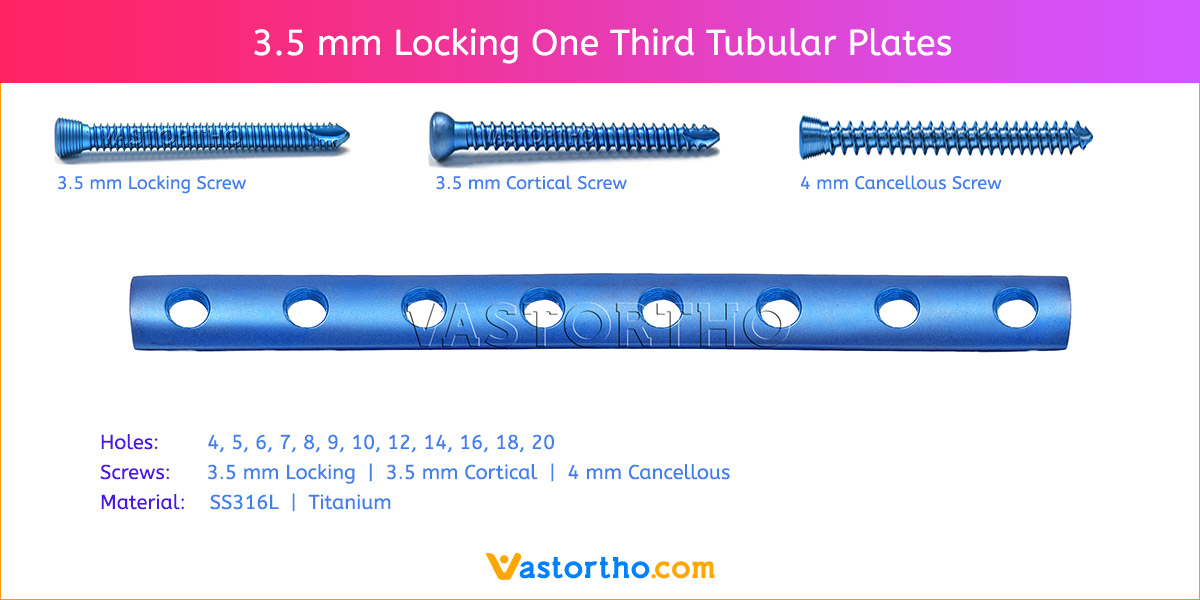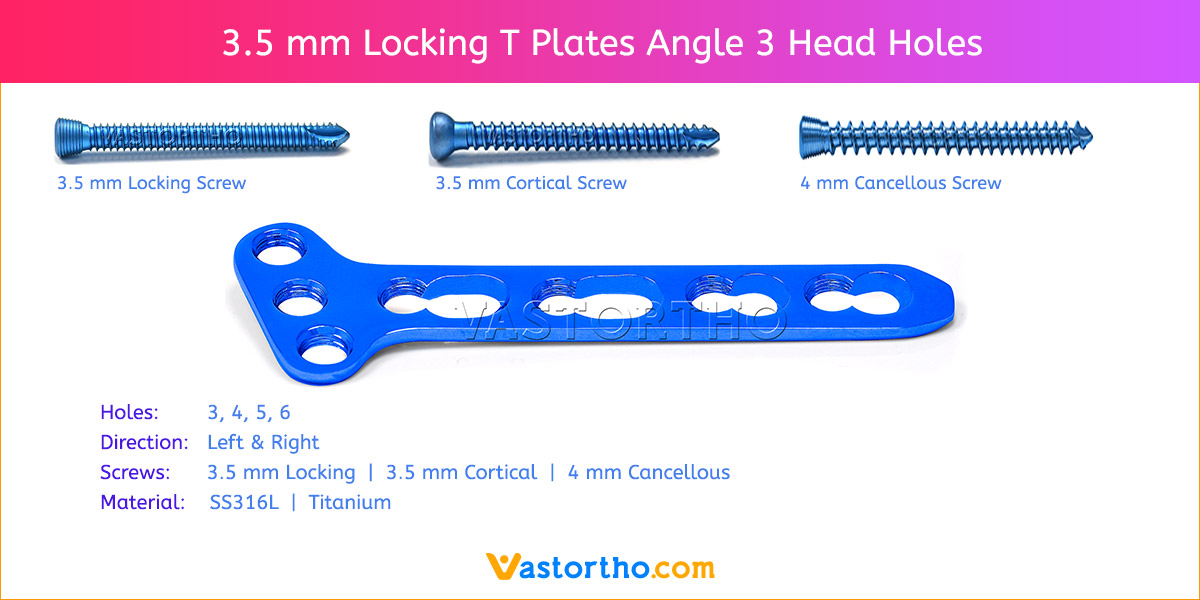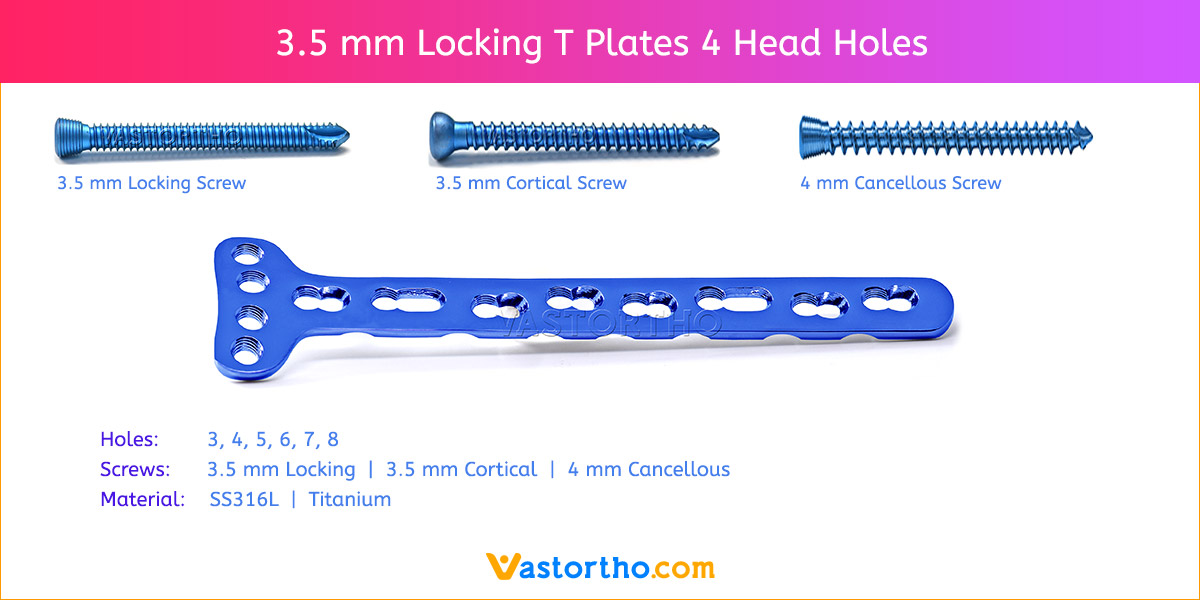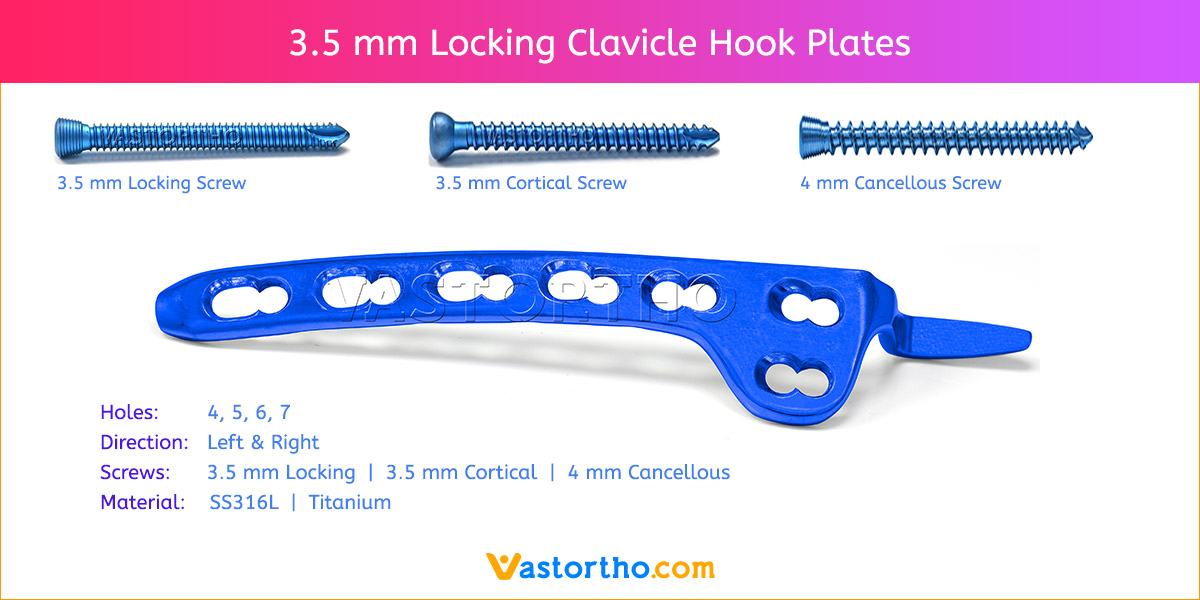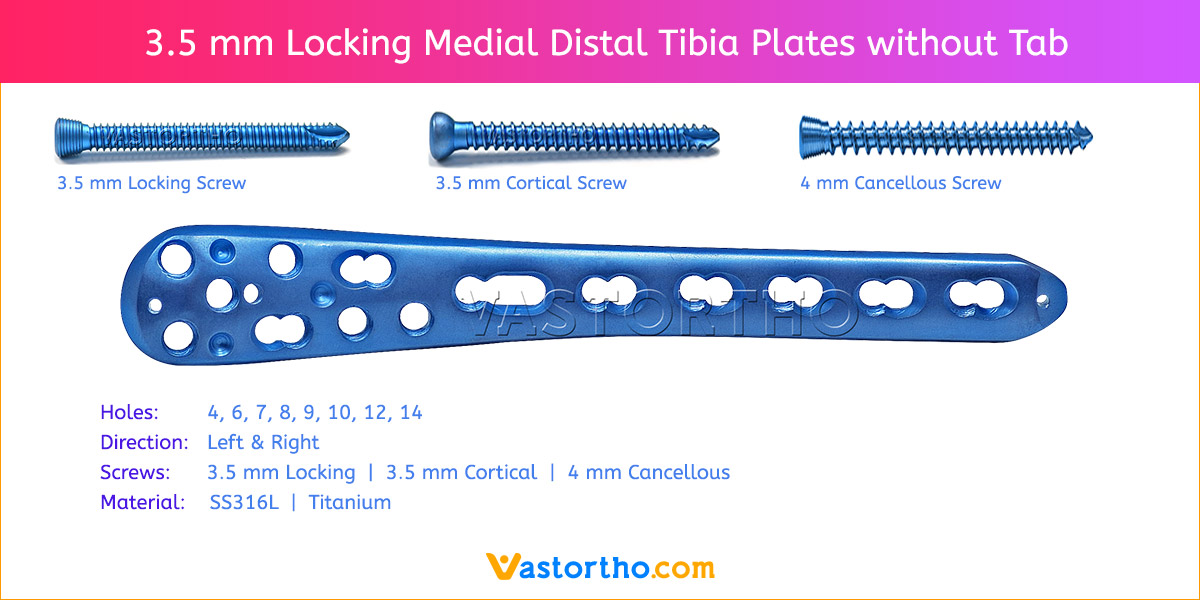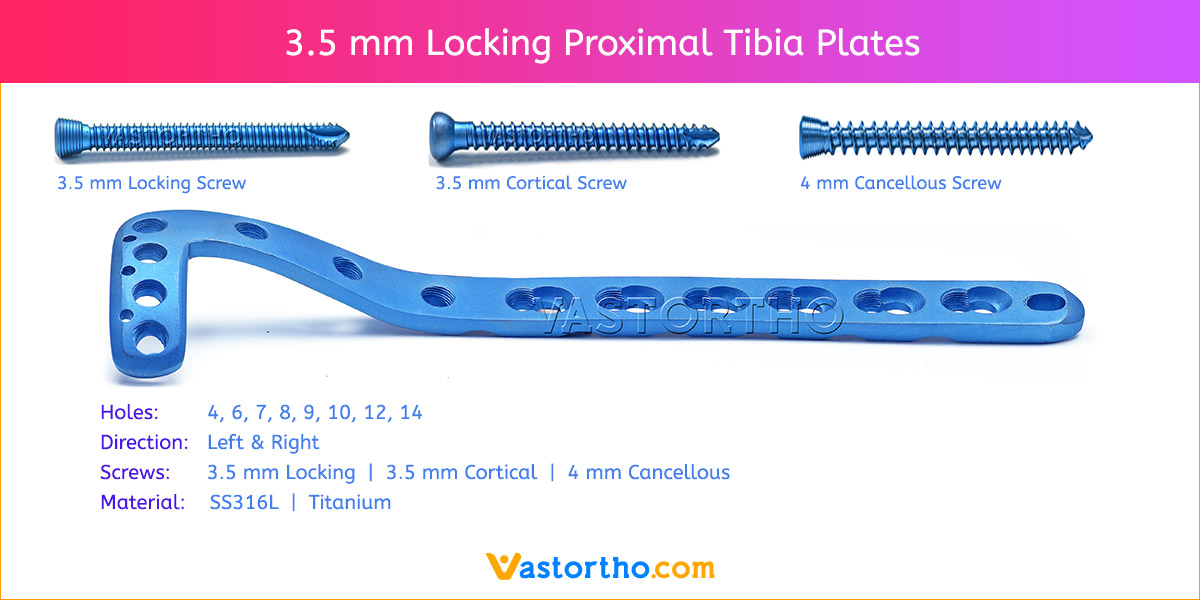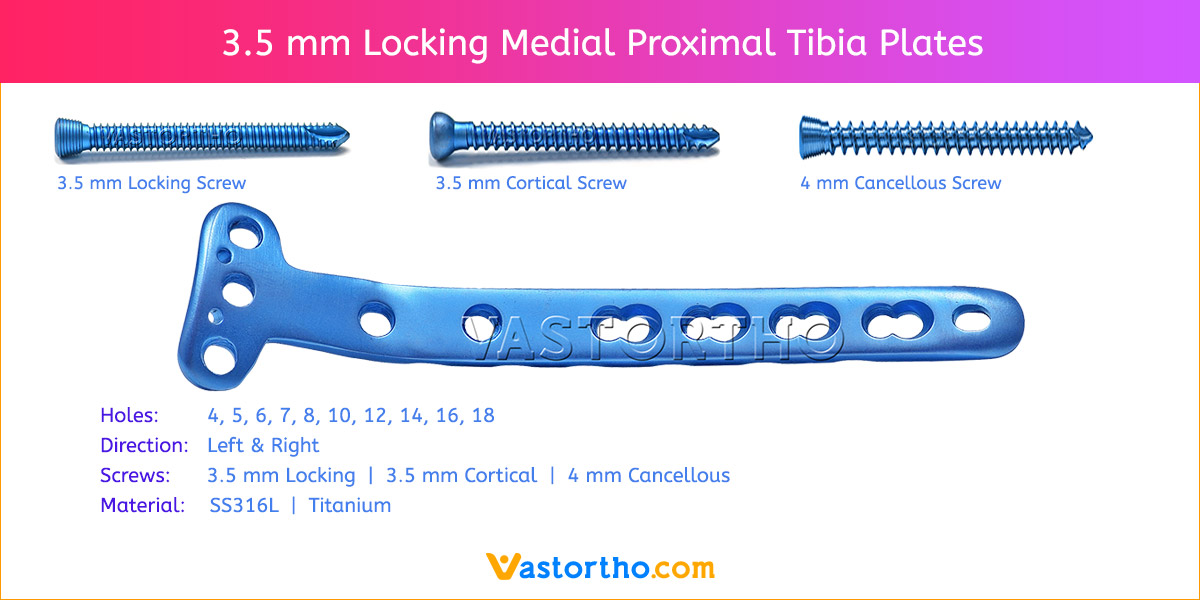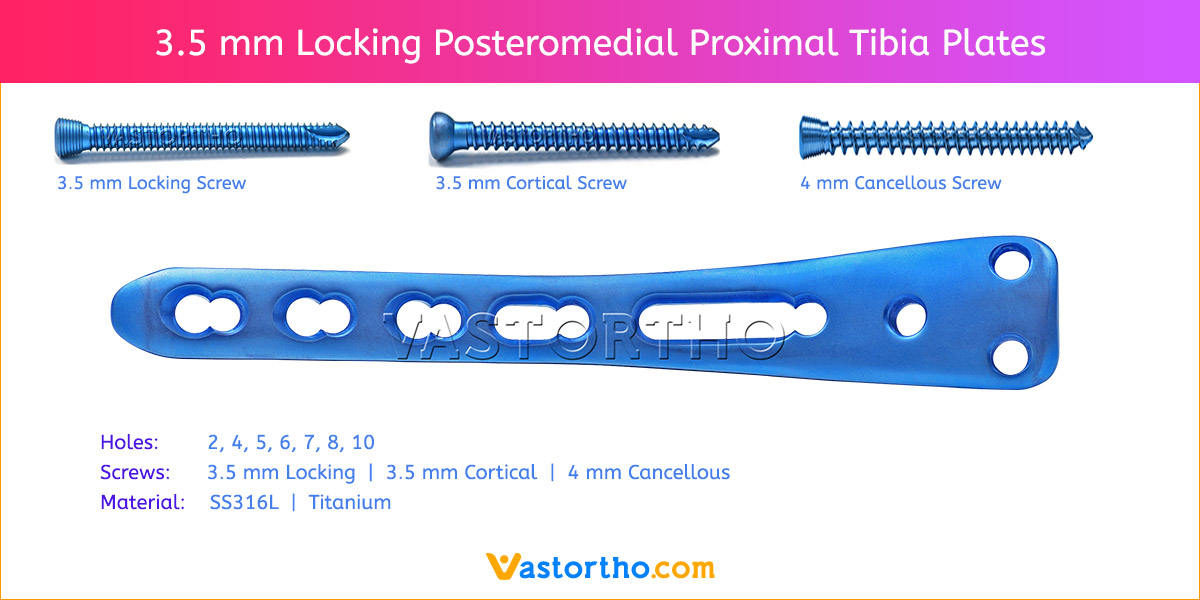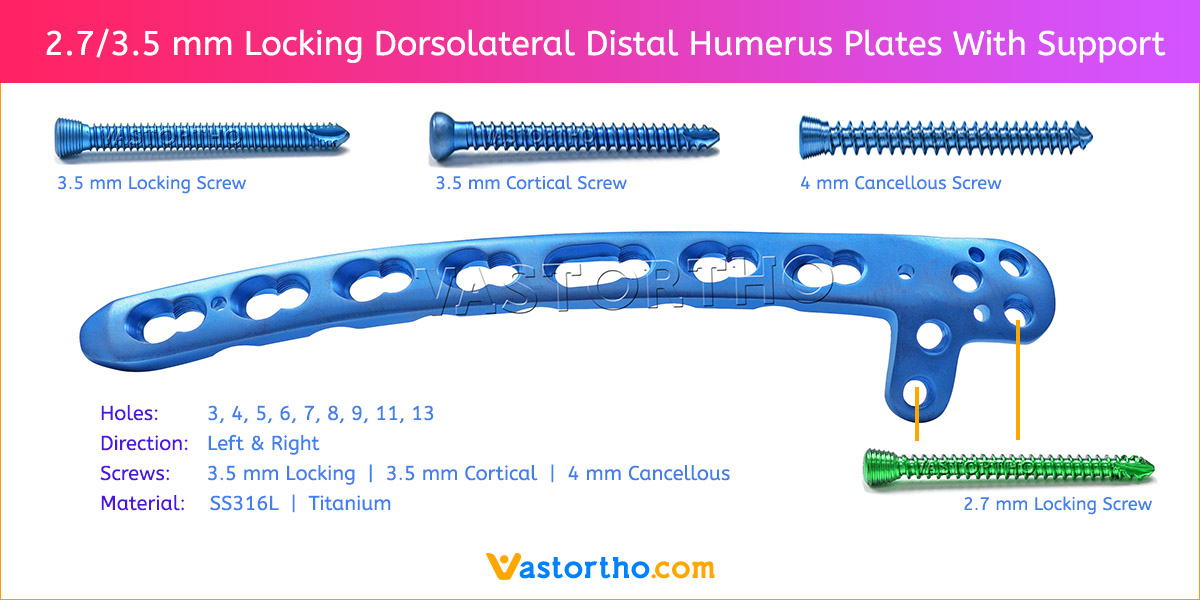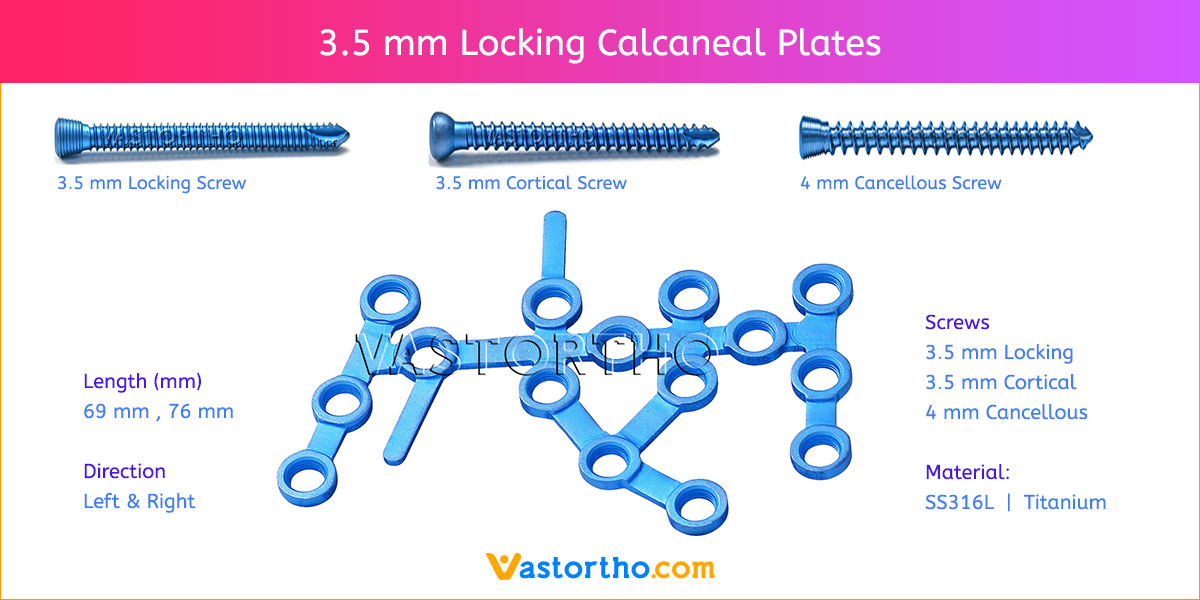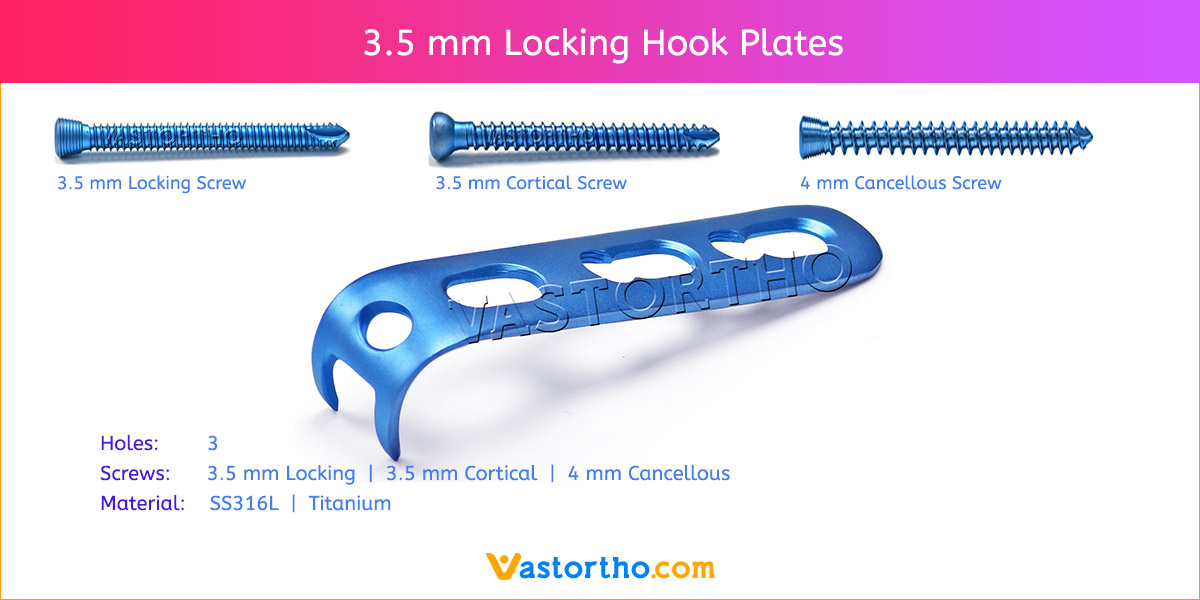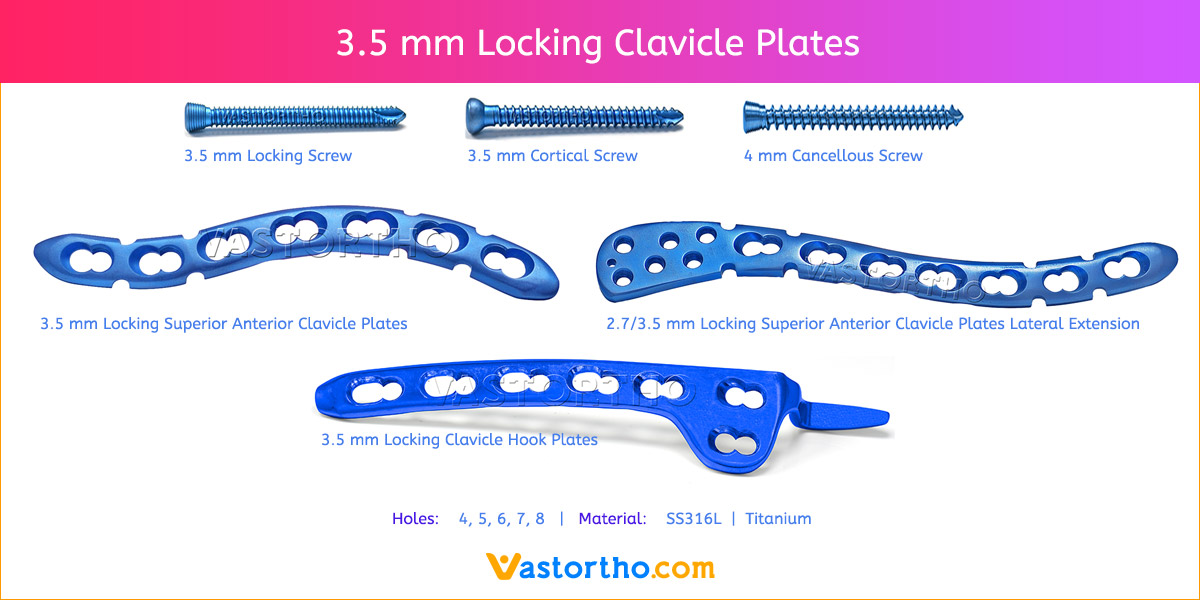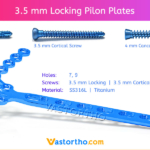3.5 mm Locking Pediatric Hip Plates Specification, Uses, Sizes & Surgical Instruments.
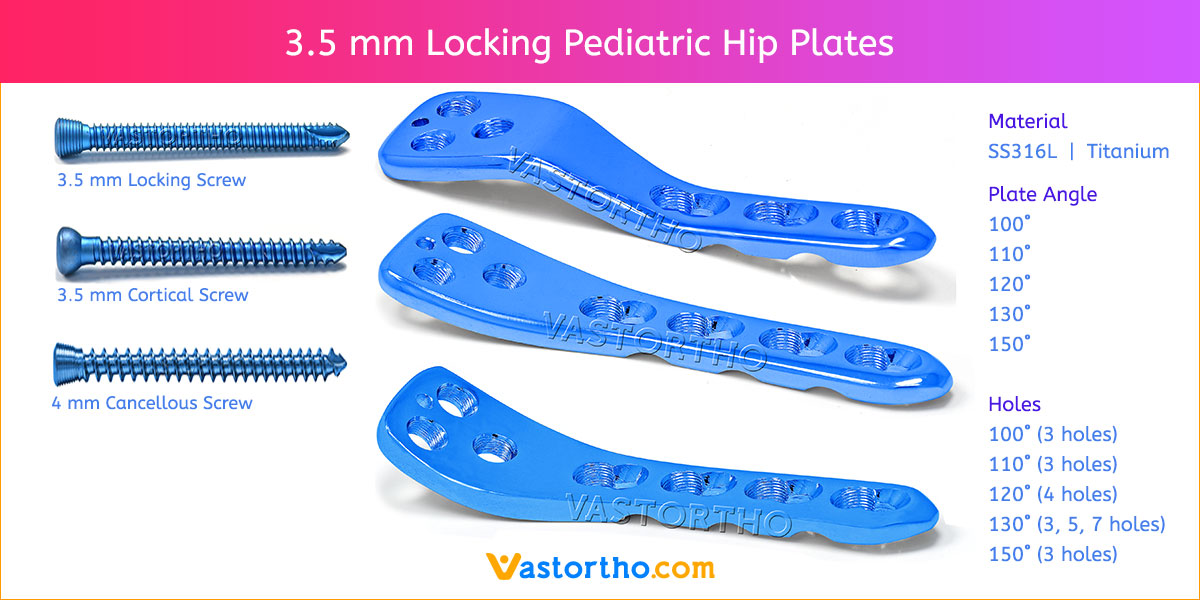
3.5 mm Locking Pediatric Hip Plates Specification
3.5 mm Locking Pediatric Hip Plates cover treatment options for stable fixation of varus and valgus as well as rotation osteotomies and fracture treatment of the proximal femur. 3.5 mm Locking Pediatric Hip Plates have a universal design for the left and right femur. Plate has three neck screws in the proximal part and combi-holes for locking or cortical screws in the distal part. Pediatric Hip Plates have the following main characteristics ensuring excellent fixation in the bone:
- Plates available holes are 3 hole in 100°, 3 hole in 110°, 4 hole in 120°, 3, 5, 7 hole in 130° and 3 hole in 150°.
- Plate has combi holes and round holes. Combi holes allow fixation with locking screws in the threaded section and cortex screws in the dynamic compression unit section for compression.
- The shaft holes accept 3.5 mm locking screws in the threaded portion or 3.5 mm cortical screws or 4 mm cancellous screws in the compression portion. Distal locking holes in plate head accept 3.5 mm locking screws or 3.5 mm cancellous screws.
- 3.5 mm Locking Pediatric Hip Plates allow implant placement to address the individual fracture pattern.
- Limited-contact surface reduces bone-to-plate contact and helps to preserve the periosteal blood supply.
- Choice of different lengths of plate eliminates the need to cut plates.
- Pre-contoured plate to match anatomical shape.
- Available in both Titanium and Stainless steel.
- locking plate increases construct stability, decreases risk of screw back-out and subsequent loss of reduction. It also reduces the need for precise anatomic plate contouring and minimizes the risk of stripped screw holes.
- A complete Instruments Set is available for 3.5 mm Locking Pediatric Hip Plates. General Instruments are available for this plate such as Plate Bending Press, Plate Holding Forceps, Plate Bending Pliers, Bone Holding Forceps, Bone Elevators, Bone Cutter, Bone Nibbler, Depth Gauge, Sleeve, Screw Driver, Trocar Sleeve etc.
- Angular stability – Reduces the risk of primary and secondary loss of correction. Due to the angular stability, a hip spica is no longer necessary in the majority of older cases.
- Easy and safe surgical technique – Initial plate positioning with Kirschner wires rather than using a chisel allows easy adjustment without bony damage.
- Medialization – For 3.5mm Locking Paediatric Hip Plate there is the possibility of additional medialization that means that just one off-set is required for each plate size.
3.5 mm Locking Pediatric Hip Plates Uses
3.5 mm Locking Pediatric Hip Plates are indicated for fixation of fractures (including pathologic and impending pathologic fractures) and osteotomies of the femur in infants, children, adolescents and small statured adults.
Specific indications for plates include:
- Varus, valgus, rotational and/or shortening osteotomies.
- Femoral neck and/or pertrochanteric fractures.
- Proximal metaphyseal fractures.
- Diaphyseal fractures.
- Pathologic fractures.
- Prophylactic use for impending pathologic fractures.


